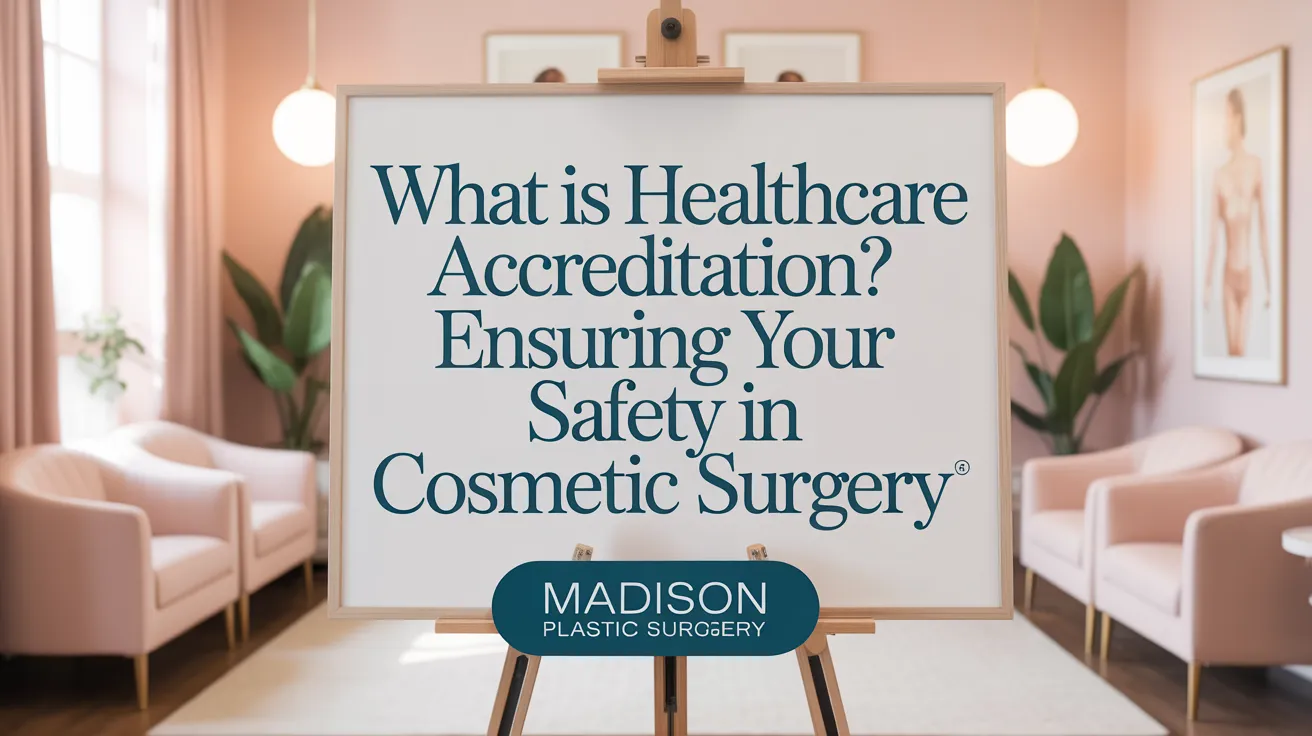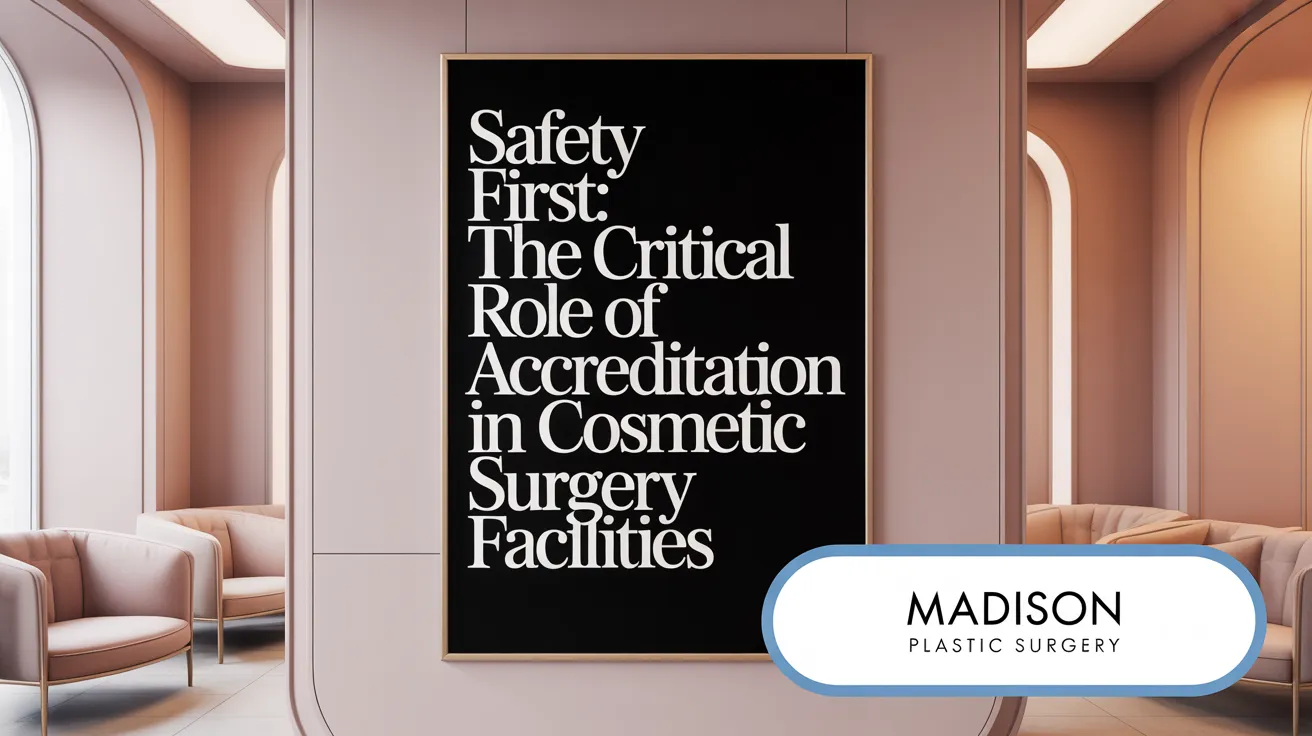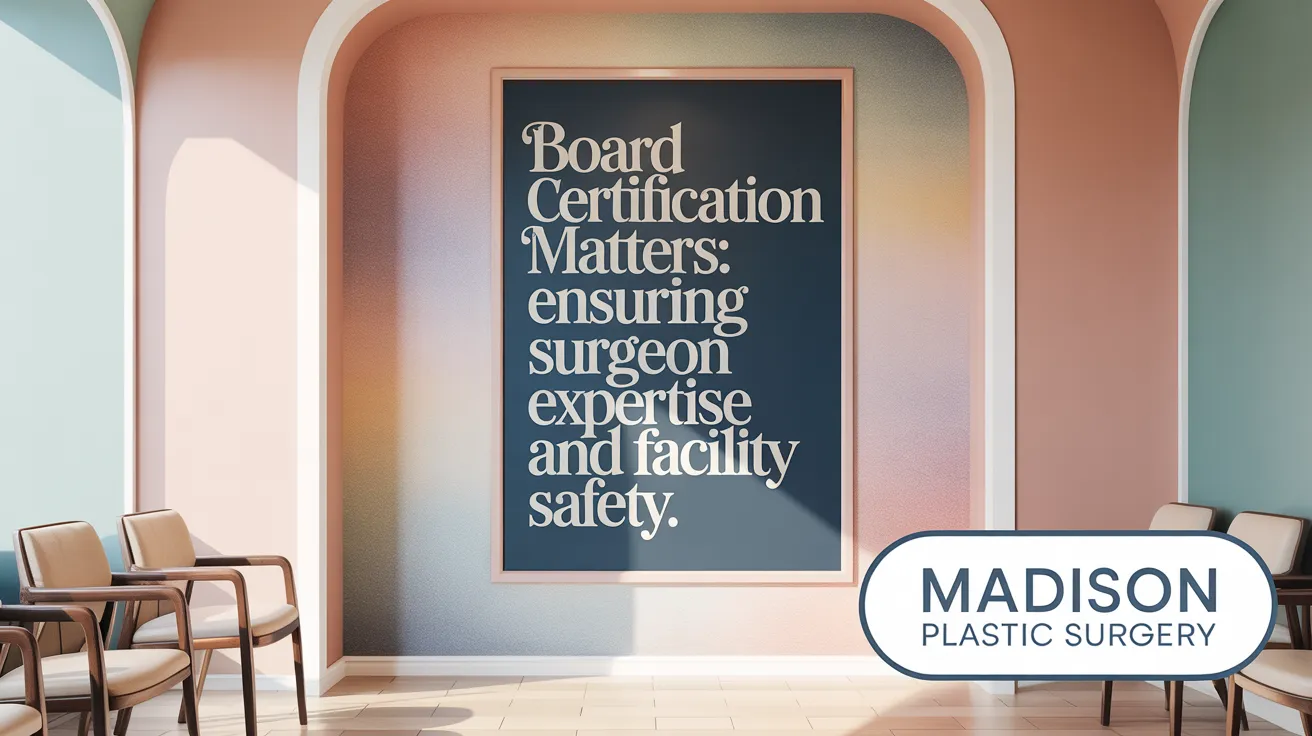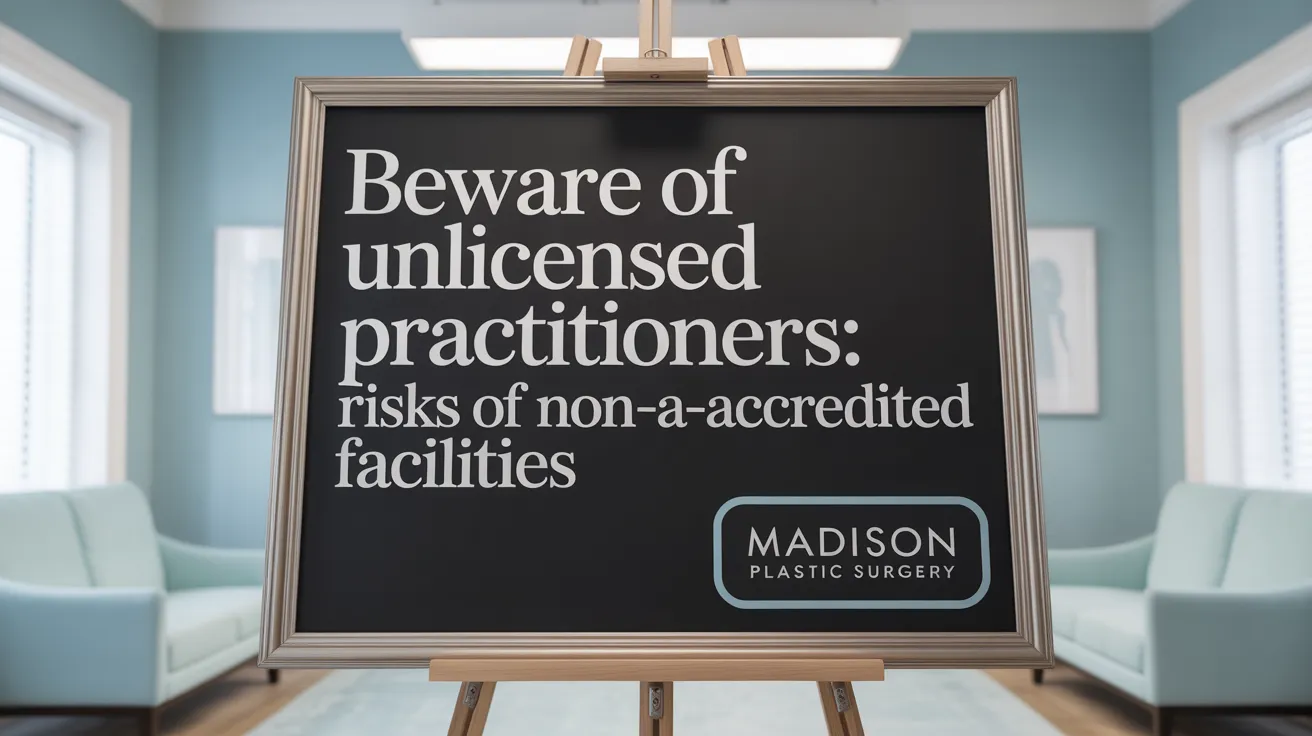Setting the Stage for Safe Cosmetic Procedures
The pursuit of cosmetic surgery involves not only aesthetic aspirations but also the critical necessity of patient safety. Accreditation of surgical facilities and board certification of surgeons stand as fundamental pillars ensuring the highest standards of care. From rigorous evaluation protocols to adherence to stringent safety measures and ethical practices, these credentials assure patients of quality and security. This article explores why accreditation matters profoundly in cosmetic surgery, delineating how it protects patients and enhances outcomes.
Understanding Healthcare Accreditation in Cosmetic Surgery Facilities

What is healthcare accreditation and how does it relate to cosmetic surgery facilities?
Healthcare accreditation is a voluntary, external evaluation process that assesses whether medical facilities meet stringent quality and safety standards, often going beyond government regulations. For cosmetic surgery centers, accreditation confirms that the facility maintains rigorous safety protocols in healthcare, equipment standards, hygiene practices, emergency readiness, and qualified personnel, including board-certified surgeons, and licensed anesthesiologists. This process helps to ensure that patients receive care in environments dedicated to safety and excellence.
Why is accreditation important for patients considering cosmetic surgery?
Accredited cosmetic surgery facilities follow strict cleanliness and sterilization protocols to minimize infection risks and complications. They employ qualified, experienced staff and maintain properly functioning, state-of-the-art medical equipment. Emergency preparedness is a critical component, with protocols and backup systems in place. Together, these standards enhance patient safety, reduce the likelihood of adverse events, and foster greater trust and confidence in the surgical experience.
What role does accreditation play in quality assurance and regulatory compliance?
Beyond safety, accreditation promotes quality assurance and continuous improvement and ensures compliance with privacy laws like HIPAA. Accredited centers undergo regular inspections and audits by recognized bodies to uphold standards. These assessments reinforce accountability and encourage facilities to maintain excellence in patient care.
Which organizations provide reputable accreditation for cosmetic surgery facilities?
Well-known accrediting bodies include:
- AAAHC (Accreditation Association for Ambulatory Health Care)
- AAAASF (American Association for Accreditation of Ambulatory Surgery Facilities)
- The Joint Commission (JCAHO)
- QUAD A, a global nonprofit partnering with facilities in multiple countries to improve patient safety
These organizations evaluate facilities on criteria including staff certification, safety protocols, equipment quality, sanitation, and emergency preparedness.
How can patients verify a facility's accreditation status?
Patients can check accreditation by visiting official websites of accrediting agencies or reviewing facility certifications posted by surgeons. Surgeons' offices normally provide accreditation details, and direct verification through agencies is encouraged to guard against false claims. Confirming accreditation ensures that patients choose a safe, qualified surgical environment for their cosmetic procedures.
The Critical Role of Accredited Facilities in Ensuring Safety

What safety protocols do accredited surgical facilities follow?
Accredited surgical facilities follow rigorous safety protocols in healthcare to protect patients at every stage of their care. These include comprehensive sterilization and infection control measures, ensuring all instruments and surfaces are properly disinfected. Emergency preparedness is a priority, with backup equipment, reliable lighting, and electricity maintained to tackle unforeseen situations like power failures.
Staff working in accredited centers are highly qualified, including licensed surgeons who typically hold hospital privileges and anesthesiologists trained to manage anesthesia safely. Continuous training and education are standard for all personnel, guaranteeing updated knowledge of best practices. Additionally, accredited facilities comply with OSHA regulations to maintain workplace safety and with HIPAA to protect patient privacy.
How do accredited facilities compare to non-accredited ones in terms of safety?
Compared to non-accredited facilities, accredited centers demonstrate superior safety outcomes. Their strict adherence to nationally recognized quality and safety standards results in a serious complication rate of less than 0.5% and an impressively low mortality rate — under 1 in 57,000 cases.
Non-accredited facilities frequently lack standardized safety protocols and do not participate in continuous quality improvement programs. This absence often leads to higher risks of infections, medication errors, and surgical complications, sometimes resulting in fatalities. Therefore, accreditation acts as a critical trust marker, indicating a facility’s commitment to patient safety and quality care.
What emergency preparedness and infection control measures are in place?
Accredited centers have robust emergency protocols, featuring fully equipped operating rooms ready for life-saving interventions. Staff members are trained in Advanced Cardiac Life Support (ACLS) to handle cardiac or respiratory emergencies effectively.
Infection control is stringent, with protocols for hand hygiene, sterilization of instruments, safe disposal of sharps, and use of personal protective equipment (PPE). These measures significantly reduce the risk of postoperative infections and promote faster recoveries.
How do inspections, audits, and regulatory compliance contribute to safety?
Regular inspections and audits by accrediting bodies ensure ongoing compliance with high standards. Facilities must address any identified deficiencies promptly to maintain accreditation status. Compliance with local, state, and federal regulations, such as OSHA and HIPAA, safeguards both patient safety and confidentiality.
These audits also verify staff credentials and facility readiness, providing patients peace of mind through transparent accountability.
| Aspect | Detail | Importance to Safety |
|---|---|---|
| Safety Protocols | Sterilization, infection control, emergency backup | Minimize infection and procedural risks |
| Staff Qualifications | Licensed surgeons, anesthesiologists, ongoing training | Ensure expert care and handling of complications |
| Emergency Preparedness | ACLS-trained staff, backup equipment, emergency plans | Ready response to life-threatening events |
| Inspections & Compliance | Regular audits, OSHA & HIPAA adherence | Continuous quality assurance and patient privacy |
| Outcome Statistics | <0.5% complications, <1 in 57,000 mortality rate | Evidence of proven safety in practice |
Board Certification: A Vital Complement to Facility Accreditation

What does board certification mean in plastic and cosmetic surgery?
Board certification signifies a surgeon's advanced training, expertise, and verified competence in plastic or cosmetic surgery. It involves completing specialized residency programs, passing comprehensive exams, and committing to ongoing education. This certification demonstrates that the surgeon meets high professional and ethical standards crucial for patient safety.
Which boards certify cosmetic and plastic surgeons?
The main certifying organizations include:
| Certification Board | Focus Area | Role in Patient Safety |
|---|---|---|
| American Board of Plastic Surgery (ABPS) | Plastic surgery, including cosmetic and reconstructive procedures | Ensures surgeons have rigorous training and subspecialty expertise (Board Certification in Plastic Surgery) |
| American Board of Cosmetic Surgery (ABCS) | Cosmetic surgery specialties | Certifies cosmetic surgery specialists with fellowship and exam requirements (American Board of Cosmetic Surgery) |
| American Board of Facial Cosmetic Surgery (ABFCS) | Facial cosmetic procedures | Verifies specialized training in facial cosmetic surgery (American Academy of Facial Plastic and Reconstructive Surgery) |
What are the requirements for board certification?
Surgeons must complete extensive surgical training, including years of residency in general surgery and plastic surgery or cosmetic surgery fellowships. Certification requires passing stringent written and oral exams. Maintenance of certification mandates continuous professional development and education to stay current with surgical advancements and safety protocols (Board certification in plastic surgery.
How do board-certified surgeons relate to accredited surgical facilities?
Board-certified surgeons typically operate within accredited surgical centers that meet strict standards for cleanliness, equipment, personnel qualifications, and emergency preparedness. Accredited facilities ensure a safe environment, and surgeons' board certification confirms expertise. This combined approach enhances overall patient safety (Benefits of Accredited Surgical Centers).
Why is surgeon board certification important alongside facility accreditation?
Board certification confirms a surgeon’s specialized training, expertise, and ethical commitment, while facility accreditation guarantees a secure and quality-controlled environment. Together, they significantly reduce surgical risks, lower complication rates, and improve patient outcomes, offering patients the best assurance for safe and effective cosmetic surgery.
Risks of Non-Accredited Facilities and Unlicensed Practitioners

What are the dangers of having cosmetic surgery in non-accredited facilities?
Undergoing cosmetic surgery in non-accredited facilities poses serious risks. These centers often lack essential safety protocols in healthcare and do not maintain proper sterilization or emergency preparedness. The staff may not be adequately trained or qualified, increasing the danger of anesthesia errors, infections, medication mistakes, and potentially fatal complications. Without proper oversight, these facilities might also employ unlicensed practitioners who perform invasive procedures without medical qualifications, greatly elevating the possibility of disfigurement and long-term health problems.
Why is it crucial to verify surgeon and facility credentials before surgery?
Verifying the credentials of both the surgeon and the surgical facility is critical for patient safety. Certified surgeons have undergone rigorous training and meet high professional and ethical standards required to perform cosmetic procedures safely. Accredited facilities comply with strict national safety and quality standards, regularly undergo inspections, and have necessary emergency equipment and qualified staff on hand. Choosing providers without confirmed credentials or in unaccredited facilities significantly increases the risk of complications, substandard results, and expensive corrective surgeries.
Additional risks and financial implications
Many patients are lured by lower costs at non-accredited centers. However, these savings come with substantial financial and health risks. Infections, complications, or poor surgical outcomes caused by unlicensed or poorly trained practitioners often require costly revision surgeries or prolonged medical care. Moreover, unaccredited facilities may not have liability insurance or enforce quality improvement systems, leaving patients financially vulnerable in case of adverse events.
Reports of unlicensed practitioners
There have been documented cases where unlicensed individuals, including those operating outside medical contexts like beauty salons, have performed procedures such as liposuction, resulting in severe injuries. This emphasizes the danger of bypassing credential verification and highlights the need for patients to confirm both the surgeon’s board certification and the facility’s accreditation.
By choosing board-certified surgeons and accredited surgical centers, patients safeguard their health, reduce risks of serious complications, and invest in safer, higher-quality cosmetic surgery outcomes.
Enhancing Patient Safety Through Accreditation and Certification

How does accreditation promote continuous quality improvement?
Accreditation plays a vital role in elevating healthcare quality by enforcing regular inspections, audits, and requiring surgical centers to report safety and complication data. These measures ensure facilities maintain high standards and pursue ongoing quality assurance and continuous improvement initiatives.
Accredited centers continuously train staff and participate in peer review, which helps refine safety protocols in healthcare and adopt best practices. This cycle drives safer surgical environments and fosters greater transparency, providing patients with increased confidence in the care they receive.
Role of accreditation agencies in ongoing inspection and peer review
Accrediting bodies such as AAAHC, AAAASF, Quad A, and The Joint Commission conduct thorough evaluations of surgical facilities covering sanitation, equipment, personnel qualifications, and emergency preparedness. These agencies verify compliance with rigorous standards and enforce corrective actions when needed.
They also facilitate peer review processes that encourage surgeons and staff to maintain professional excellence and ethical conduct. Besides ensuring readiness for emergencies, these agencies monitor adherence to privacy laws like HIPAA, protecting patient information.
Benefits including emergency readiness, privacy compliance, and thorough patient evaluation
Accredited surgical facilities are equipped with up-to-date medical equipment, backup power systems, and well-established emergency protocols to respond swiftly to complications. Staff are licensed and regularly trained, including anesthesiologists and nursing personnel.
Privacy compliance under laws such as HIPAA guarantees protection of sensitive patient data. Additionally, comprehensive preoperative evaluations assess individual medical history and health status, contributing to personalized and risk-aware surgery planning.
Ethical importance of choosing board-certified surgeons in accredited centers
Board-certified surgeons have completed rigorous training and passed extensive examinations confirming their expertise, such as those certified by the American Board of Plastic Surgery (ABPS) or American Board of Cosmetic Surgery (ABCS). When they operate in accredited centers, they are supported by qualified staff and operate within controlled standards that prioritize patient safety.
These surgeons adhere to ethical practices where patient welfare is paramount, delivering honest consultations, clear communication about risks, and realistic expectations. This professional integrity is key to reducing complications and improving surgical outcomes.
Postoperative care and long-term follow-up as part of accredited facility standards
Accredited facilities emphasize the importance of postoperative care and continuous follow-up to monitor healing, promptly identify complications, and support recovery. This ongoing patient engagement ensures optimal results and long-term wellbeing.
Such structured aftercare, combined with adherence to strict sterilization and safety measures during surgery, significantly lowers infection rates and enhances patient satisfaction.
Choosing an accredited center with board-certified surgeons ensures the highest standards of safety, quality, and ethical medical care throughout the surgical journey.
The Essential Role of Accreditation in Safe Cosmetic Surgery
Accreditation of surgical facilities and board certification of plastic and cosmetic surgeons are crucial, intertwined safeguards that uphold the highest levels of patient safety. They guarantee compliance with rigorous standards for sanitation, equipment, emergency preparedness, and professional expertise. Patients seeking cosmetic surgery benefit greatly from verifying these credentials, which serve as reliable indicators of quality care, ethical practice, and minimized complications. Ultimately, prioritizing accredited facilities and board-certified surgeons empowers patients to pursue cosmetic procedures confidently while significantly reducing risks, fostering better outcomes, and ensuring post-surgical well-being.
